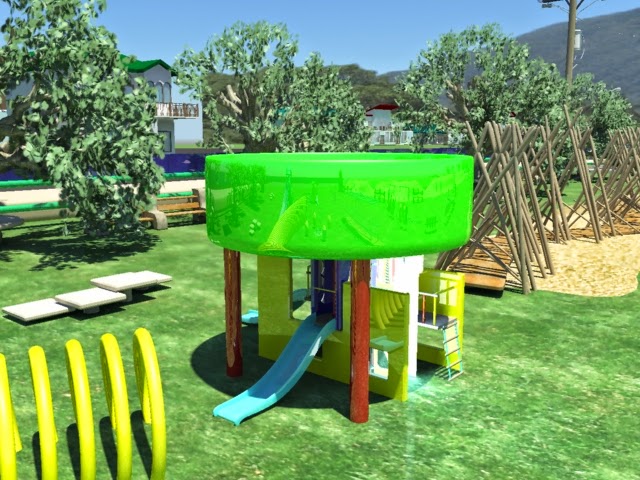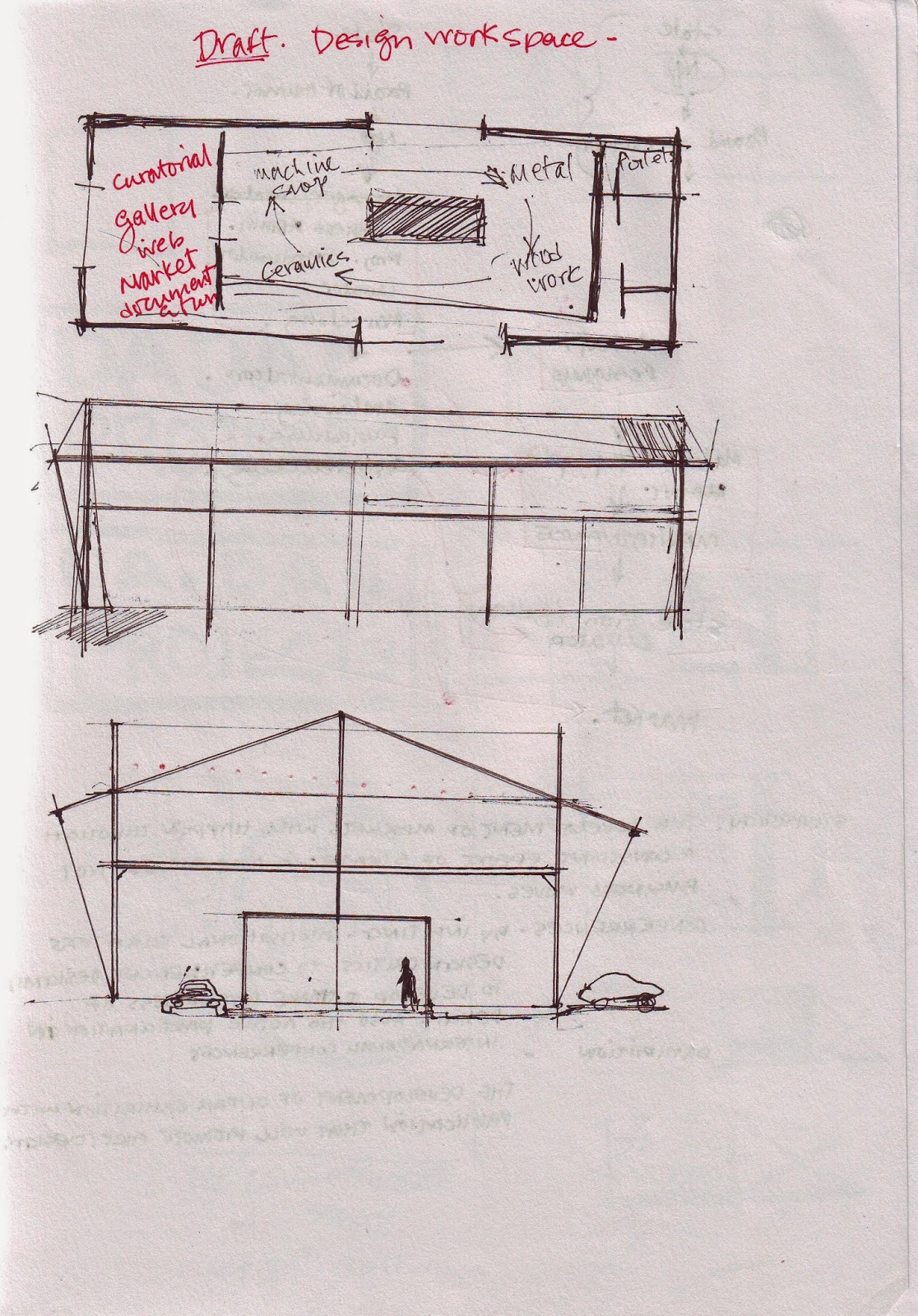MANIFESTO
THE THEORETICAL IMPLICATION OF PLAY STRUCTURALISM.
A PERFORMANCE IN SYSTEM RE-INTERPRETATION.
THE POLITICS OF ART IN THE SCULPTURAL PLAYGROUND PROJECT.
16 September 2014.
 |
| TREE HOUSE |
construction of the aesthetic purpose into
a political form; which can deconstruct and reconstruct in an oblivious nature of
art-design potentialities; interferring the natural evolution of the politics
of communal spaces. The object becomes tangled in the personal politico-ambitions
of individuals and party, an innate form of Post Colonial political/educational
heritage, which has evolved into Third-World Cultism.
The Sculptural Playground Project will
insist that the art-design object be rethought, de-mystified, democratised;
re-socialized in the proper mannerism due.
Degrading; of the
artists and in consequence the object; ensures that the art-object must at all
time re-enforce its own politics, despite the formal state, attempts to install
a cultural/art policy, which really insist in re-installing formal political
ambitions through the desirability of the object. The party not the people
becomes empowered in their strength in defining and empowering space.
Global
economic; rhetoric, which enforces certain conditionality’s
onto the Third World object; developed through a position of Western philosophical
thinking based on race based exploitation (slavery) and imperialism that have
recently showed the world (post economic crash) its intention of personifying
the hedonism of Western exploitation of labour and markets as the default
position for global economic thought. It’s understood that economics must play
an integral role in the ambitions of objectification. To be built, to be seen,
displayed with all the ethical, philosophical and moral implication of a Third
World objectification, there must be an attention to an economics or communal
re-evaluation; which takes into consideration re-values the materialities.
 |
| HERE YOU CAN SEE THE CIRCULAR MOTION IN ACTION, THE OPERATIONAL MODEL OF THIS SPACE, WILL BE THE OPERATIONAL MODEL OF THE INNOVATION SPACE. |
Aesthetic
economics; must insist in some way, to challenge
popular economic thought, at the state, social and the personal. It’s through a
constant critical process; that is relational to the process towards the being
of art objectivity; which will re-theorize a new political economic thought,
absorbing the qualities of process, or, refining how economics operate around
the development of the desirable object. We will re-evaluate labour; its
personal position to the object; its personal relation to economics.
Aesthetics
Politics; insist that we re-visit the social
structure, de-construct purpose, and re-construct the criticality of purposeful
art objectification, recalculating the politics of the social space.
Understanding that within objectivity lays an inherent economic truth.
Aesthetics will have to evolve through principle,
in the constant acceptance of the indigenous, objectivity must be analyzed
within that context of constant context, constant dialog, constant
construction, evolves an unavoidable truth of the politics of the art-designer,
the state, the eventuality of economics of state, manufacturing, business,
communality…
The
Incubator Space; will be the operative physical
intention of the Sculptural Playground Project, the ambition of developing its physical
installation; will cultivate a constant dialogue; through process; eventually
leading to theoretical and physical realities for the desirable object.
There should be no hierarchy, no implied
notion of one voice, just circular thought pattern that allow for destruction,
growth, achievements, rewards and development of desirability. Circularity
exists within physical spaces; the home, the office, the industrial, the
communal. The space where the Sculptural Playground Project; is proposed to be
installed; The Orange Grove Savannah, Tacarigua, Trinidad and Tobago, The
Caribbean - there is an entrance/exit, circular walking track, rectangular
football field, rectangle cricket pitch with circular form. Then there is the
play-space, which runs in a circular form through the obstacle course.
What have been created are cell structures,
which vibrates certain amount of energy, which can be absorb by the other cells,
creating living organism of communalism, the village, the tribe. The intention
is to imply that logic; of circular dialog to the physical incubator space. At
the centre sits art desirable-objective, in a circular dialog will stand,
craftspeople, artists, intellectuals, business peoples, engineers, architects,
designers… forming a society for communities.
The
circular cell structure; are separate, at the same
time involved with each other, operating when one is dormant, with a full
appreciation that each form exist.
The concept of the invisible transient
working forms existing within physical spaces, a physicality that can be
utilized to construct physical art-objective dialogues using intellectual
physical worlds (Non Physical Form), is plausible and already operates
indigenously in our urban and rural spaces; owning their own eco-systems, they
operate as mom and pop workshops, cell shops, virtual offices, pop-up stores,
flexible industrials spaces, workshops etc. We need to harness the genetic
molecules of memory of these spaces, pull from their veins indigenous
engineering intellectualism; which can provide for the new desirability of
consumption.
 |
| CELLS STRUCTURE. |
The strength of the non-physical
(Intellectual Physical Worlds, above chart) structure is that it exist, in the
moment, we need to train that space to understand purpose; of intent; developing
a belief in purpose; for art-design aesthetic politics. That understanding of
purpose of art-design needs to be transmitted to our technical crafts people;
that this purpose is not only about the language of technicality but a morality
and emergence of a philosophy of purpose, and a criticality of that purpose.
These Intellectual physical centres can be found within the urban landscape,
that runs from the East; the City of Port of Spain to the city of Arima in the
West.
These Institutions are:
- The University of the West Indies, UWI – Research and Development Institution.
- The University of the Trinidad and Tobago, UTT – Technical training institution; from fashion to engineering.
- Metal Industries Company Limited, MIC – Craft Training Institution – Woodwork to Metal to foundry.
- Independent Artists Groups – Studio 66, Alice Yard, Artists Society of Trinidad and Tobago, Institute of Architects Trinidad and Tobago, Planners Association of Trinidad and Tobago etc..
- Independent workshops, crafts peoples, trades peoples…
art-objective and emotional result, sustaining and deconstructing
conceptual matter into physical and confrontational politics, theory,
economics, social activism, technical data, local ritualism, cultural
deconstruction/reconstruction, spiritual+religious metaphors, fantasy, dream
building, planning, local philosophy, international relations, art design
theory, class mobilization, economic reality, economic theory, gender relations…
Here these constant are explored and visualized; to be instantly deconstructed
once more.
Memory sits at the cornerstone of memorializing the contemporary
post-colonial indigenous art-object for consumption. Art-Design sits at the
centre of re-negotiating the indigenous object towards desirability.
Towards desirability of objectification; a face to face
confrontation between class systems; of ethnicity, professional and gender
needs to happen, this can happen at the
centre of physical model; within the circular process of production; lies the
ability to deconstruct form. Developing an alternative understanding of indigenous
intellectual, ethical and philosophical conceptualization of new formality. The
new form with it inherent nobility sets the stage for how it will operate
within the communal; the new forms ability to infuse nobility to people and
space sits with its desirability, which sits in a design indigeneity. The
relational to the internal spiritual intellectual understanding of reform is
important to the deconstruction of the oppressive object.
Here, a moral reality can be set, in the
other Non Physical Model, the moral and ethical hard talk that’s necessary
slips, it may not be as intense, cyber space; becomes the acknowledge language,
with the possibility of becoming masturbatory and imprudent.
Attention to a detailed discourse should
not be lost, the 8th day wonder, the suffering of Attention
Deficient Disorder, historical victimhood syndrome, the imperial notion of the
individual as the new nationality, where the individual rather than the
community is given currency.
Memory – within the Physical Centre Model or the Non-Physical Form Model
of development; the constant in the dialogue is memory; or the recognition of
the historical realities of space, people and the objects new desirability. Here
lies the nucleus, in revolutionizing the desirability of the consumer-able
design product. Challenging how production, imperialism and capitalism can
operate within a space, a community and nation. Designing within memory of
space and people, holds the possibility of evolving new paradigms for art,
sculpture, architecture and design in post-colonial spaces, developing
countries and ghettoized spaces in our communities. There can be no revolution
without a historical thought in design conceptualization towards re-production,
re-marketing and re-economics.
One practical model, to accomplishing this; we will look at what people have recorded in
their personal memories through photos, social gatherings, parties, pictures of
their personal spaces – kitchens, bathrooms, living rooms, bedroom. Studio
photos from their past, pictures of their spiritual journeys, at the beach,
just being. We will also go into real time space of the community to grab,
pull, borrow, talk, feel what the community in real time is saying. Here you
grab, pull, extract, borrow, till iconography is developed, grow it, nurture it
till we have something that can affect feelings within that one person, family,
friend, neighbour, community. A multitude of one iconography towards a communal
feeling of well being is the idea, that individual cells build into one body,
one community, one social cell structure. Bounded together through aesthetic
empowerment, design... art. What should
happen, as we move from one community to another, we should find more
similarities rather than opposites.
Conclusion, the desirable objectification, we all want for our personal spaces,
can be achieved through the re-constitution of the desirable art-object.
Political intention and confrontational dialogue between the artist-designer-crafts
people-manufacture and state must happen, encouraged; towards the mannerism
needed in the reconstitution of a new manifesto. There must be direct relations
between the artists, the state (or at least a respect of intellectual capacity)
and the capitalist system, made up of the manufacturers, business, technocrats,
bureaucrats and other diverse communities.
This reconstitution should be able to re-evaluate
system and put forward a new aesthetic policy.
This can only be established; when the
intellectual worlds understand the goals of purposeful intention for the desirability
of the new art-object.
Aesthetic policy must insist, that order
prevails in the subjective order of the object, there is this consciousness in
design, a critical content, which makes it live, this is the desirer, this is
art motives, a democracy of intelligence, i.e. the democracy of criticality.
Awareness; We must engage the desirable object in a very communal conscious
manner, through confrontation we will draw on truth, expose fakers, plagiarist
and profiteers of the cultural art-object.
Through a consistent persistence to this
objective order, confrontational aesthetic ordering, have the possibility of
bringing an alternative political aesthetic ascension, from a dysfunctional
normality, which can emulate and validate our human cultural characteristics.
An aesthetic policy democratizes not only
the object, globalizes our intelligence; through process there is an internal
and external physical and metaphysical evolution, that happening, that needs to
be provoked and fed on; be reconstituted into the other.
This new art-design object aspires us to
become that what we are not, it is the political acquisition of this aspiration
through a revalued capitalist system that can restate communal space. We
propose that this euphoria can be available to all.
There is a disturbing beauty in the
corrupted version and I’m sure that we’re inclined to hold to, moving from an
understated position to an aesthetic order means systematic willingness to
impale into the already overburden system a sense of languaging that will speak
to governability, economics, community and the politics of our own ambitions.
Present political theoretical realities and
the aesthetic political theory of the Sculptural Playground Project to build a
physical space where the art-designers can articulate theoretically and
practically; a political and economic transformational discourse, developing
emotional confliction; as it is presented to state, business and community.
Success lies in thought; the presentation
of the theoretical proposition of the Sculptural Playground Project; if not
another; is desired, if not for the survival of the art-designers community,
the community in which we inhabit, our identity, but for our shear humanity as
we negotiate space.
This is not new; it just needs to be built.
Dean Arlen




